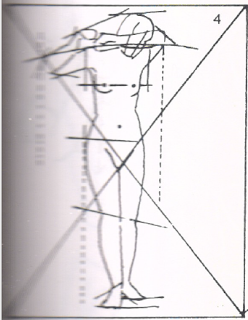Cartoon Designing Basic:
There are many ways to design or drawing a cartoon. I discuss the easy ways to draw cartoons step by step for beginners to draw the cartoon character by himself. If you read the step by step process then you will completely learn how to designing cartoon characters. If you learn this simple drawing process, you can make many characters like- cartoon design birthday cake, cartoon mehndi design, cartoon designing, carton box design, cartoon design t-shirt, cartoon ka design, cartoon design drawing, cartoon designing courses, cartoon designing app, cartoon design for wall, cartoon design wallpaper, cartoon design sweater, cartoon designing software, software for cartoon design, cartoon design bed sheet, cartoon design for tshirt, cartoon design shoes, cartoon room design, cartoon design wale, etc..
There are many ways to design or drawing a cartoon. I discuss the easy ways to draw cartoons step by step for beginners to draw the cartoon character by himself. If you read the step by step process then you will completely learn how to designing cartoon characters. If you learn this simple drawing process, you can make many characters like- cartoon design birthday cake, cartoon mehndi design, cartoon designing, carton box design, cartoon design t-shirt, cartoon ka design, cartoon design drawing, cartoon designing courses, cartoon designing app, cartoon design for wall, cartoon design wallpaper, cartoon design sweater, cartoon designing software, software for cartoon design, cartoon design bed sheet, cartoon design for tshirt, cartoon design shoes, cartoon room design, cartoon design wale, etc..
 |
| how to draw a cartoon girl for beginners |
Drawing Inspiration: Getting Started with Cartoons and
Comics
Doing rough sketches
Rough
sketches are the visual note-taking of the cartoon world. Rough
sketches should be just what they say they are — rough. Don’t spend too much
time on them, because they’re just meant to capture the basic idea and layout
of your composition so you have it when you want to develop the idea
further. Making rough sketches doesn’t require you to follow any specific rules.
Rough sketches may be little more than a series of stick
figures or other loose scribbles quickly jotted down on a scrap piece of paper
or on the back of an envelope.
Tightening up your Sketch
Tightening up a sketch means to define the lines so that the
characters, word balloons, background, and overall composition are clearer and
more defined. This is the stage when the final composition comes into focus and
you can see how the line art will look prior to beginning the inking process.
When you tighten up your sketch, you simply go over your
first loose sketch and darken it up while further defining the characters. This
is the stage where your drawings become cleaner and come into focus.
Inking
1. Before using your new brush, dip it in a brush cleaner
and twirl the end so that it acquires a sharp pointed edge.
2. After you’re satisfied that the brush tip is nice and
sharp, dip about 3/4of the brush into an open ink bottle so that you pick up a
sufficient amount of ink.
3. To draw a thin line, apply the brush to the paper using a light amount of pressure.
4. To make your line
thicker, just add more pressure.
Creating Tone and
Texture
Tone and texture can add depth and help a flat drawing look
more dimensional. Because cartoons deal primarily with black-and-white line
art, utilizing techniques such as shading and crosshatching create tone and
texture.
Tone and texture help define the shape you’re drawing and
add depth to the art. Without tone and texture, the line art looks flat and
bare and may not covey the right perspective, dimension, or relationship to the
other elements drawn around it. This section shows you how to do both
techniques.
Shading
You can use shading to add depth and dimension to your
sketch. Shadings the process of darkening an area of your sketch to give the
impression of depth.
With a Pencil
Shading with a pencil is pretty straightforward. If you draw
a cube with a pencil, shading the cube on one side to add depth is easy because
a pencil is a soft medium and is able to produce gray, shade-type tones. To
shade with a pencil, use the side of the pencil lead. Doing so creates a softer
line quality as you move it back and forth in the area you’re shading.
With ink
Ink is solid and reproduces as a dark solid value when it’s
printed. To shade with ink, simply fill in the area you’re shading so that it’s
totally black. This can create a dramatic light/dark effect. Don’t do this,
however, if you need some tonal gradation in the
area you’re shading, because it will be uniformly dark.
With Washes
Washes are methods that have been used for hundreds of years
to create shade and tonal value in illustrations and other art destined for
newsprint. Washes, which are gray in color, are used to shade an illustration.
Washes are generally ink that’s been watered down until it’s a much lighter,
transparent consistency. To apply a wash, you use a watercolor brush to dip
into the wash and cover over the areas you want to shade, usually on a
watercolor-based paper. To achieve the right gray shade, mix water in with a
small amount of ink until you get the shade you want.
The results of washes are very similar to watercolor except
that washes are always some shade of gray. The technique is still very much in
use in cartoons that are regularly published in The New Yorker magazine,
among others. The technique results in a toned-down, more sophisticated looking
composition.
Crosshatching
If you want to create a tonal quality using black and white,
you can use a technique called crosshatching. Just as the name implies,
crosshatching means to draw vertical lines in one direction and then cross over
them with diagonal or horizontal lines.
Crosshatching is a technique best suited for applications in
which other forms of shading may not reproduce well. This is especially true
with regard to newsprint.
news-papers have a tendency to run images smaller than the
cartoonist originally intended. If you color your art or use a watercolor wash,
when the image is reduced down and reproduced on the page, the shading technique
fails as the area appears solid and the image may lose any tonal quality.
Crosshatching creates a darker tone
but not a solid one. You can vary your tones by changing the number of lines
you draw and where you place them.
Ideas
1.Newspaper and magazine articles.
2.TV news.
3. Things your parents did, once upon a time — start really
listening to their stories!
4. Things your kids do — really, they’re funny in retrospect.
5. Things your pets do — ditto!
6. Your own childhood memories.
7. Funny conversations — we all have them, it’s just a
matter of remembering them.
8. Interesting situations or experiences (we all have these,
too).
9. Fascinating people you know or meet.
10. Tragic events (yes, tragedy can be funny, if it’s handled
right).
11. Mundane activities of life — remember, it’s all about
the spin you put
on things.
Writing Believable
Story Lines
Writing funny storylines creates characters that people can
not only turn to for comic relief but also will become attached to overtime.
Interesting storylines allow your characters to develop into individual voices
that, when separated from the bunch, can offer insight and subtle humor, but
together offer real synergy. In other words, the sum is greater than the parts.
Whether your comic strip appears in the newspaper or on the
Web, you may have to create a new storyline on a daily basis. Because
maintaining a believable level of constant hilarity is almost impossible, the
humor you inject will probably be more subtle than slapstick. Some points you
may want to consider when writing humorous storylines include:
- Write storylines that draw upon the characters’ strengths or weaknesses.
- Write storylines based on common humorous themes and ideas that readers can relate to and recognize in their own life.
- Write storylines that are funny but not too abstract.
- Don’t write storylines that require the reader to have read yesterday's cartoon in order to understand the one you wrote today.
- Don’t write storylines that are too conceptual.
DRAWING METHOD 1:
DRAWING METHODS FROM THE CAST OR FROM LIFE
I. First of all the artist needs to locate the center
of the paper. This can be done by drawing lines from corner to corner to help
center the study.
2. With one's eye or using a pencil one can measure to
locate the center o the subject and then make a line at that point in relation
to the center of the paper. Using free lines the artist must search for the
rhythm of the pose to aid in visualizing the figure and for placing it on the
paper with the required size. The drawing must be light so as not to erase the
mental impression by a heavy illustration. Due to this, corrections can be
easily made.
3. Then the artist must decide where the pit of the neck is
to be placed. Then a perpendicular line can be drawn from this point (in case
of a front view to the feet. In the case of a back view, the perpendicular line
must be drawn from the seventh cervical vertebra to the feet. The line of the
shoulders must be located to give the angle of their positions. In the case of a
standing figure, the leg must be drawn first, on which there is most weight.
This helps to get the proper balance of the figure.
4. Now the line showing the angle of the position of the
pelvis must be given. A line must be drawn through to indicate the knee caps.
Now the torso must be drawn to indicate its bulk and mark the width of the head,
neck. hips and shoulders. The artist must block with straight lines that go
beyond the intersections. This must be done to get a better idea of the line's
direction and to get away from the cramped feeling.
5. Sketching within the lines of a simplified skeleton aids
in checking up the position of the bulk of chest and joints. The artist must
see that the inner ankles, knee, caps, pelvis, navel, pubic bone and the pit of
the neck are in correct relation to each other. The relative sizes of leg, arm,
head to that of the neck's thickness, head to the bulk of torso, feet to hands,
arms to legs and hands to face must be compared.
6. The artist needs to go over the outline, perfecting it to
search for character and achieve the grace of line.
7. The outlines of planes and
the principal shadows must be indicated.
8. The planes need to be filled in large surfaces. The
shadows must be connected as much as possible.
DRAWING METHOD 2:
Drawing Cartoon Step 1:
 |
| cartoon designing |
 |
| cartoon designing |
Drawing Cartoon Step 3:
 |
| cartoon design drawing |
Drawing Cartoon Step 4:
 |
| cartoon design drawing |
Drawing Cartoon Step 5:
 |
| cartoon ka design |
Drawing Cartoon Step 6:
 |
| cartoon ka design |
Drawing Cartoon Step 7:
 |
| cartoon ka design |
Drawing Cartoon Step 8:
 |
| drawing cartoon |
Drawing Cartoon Step 9:
 |
| drawing cartoon |







1 Comments
DDC60949F8
ReplyDeleteGörüntülü Seks
Whatsapp Şov
Webcam Show